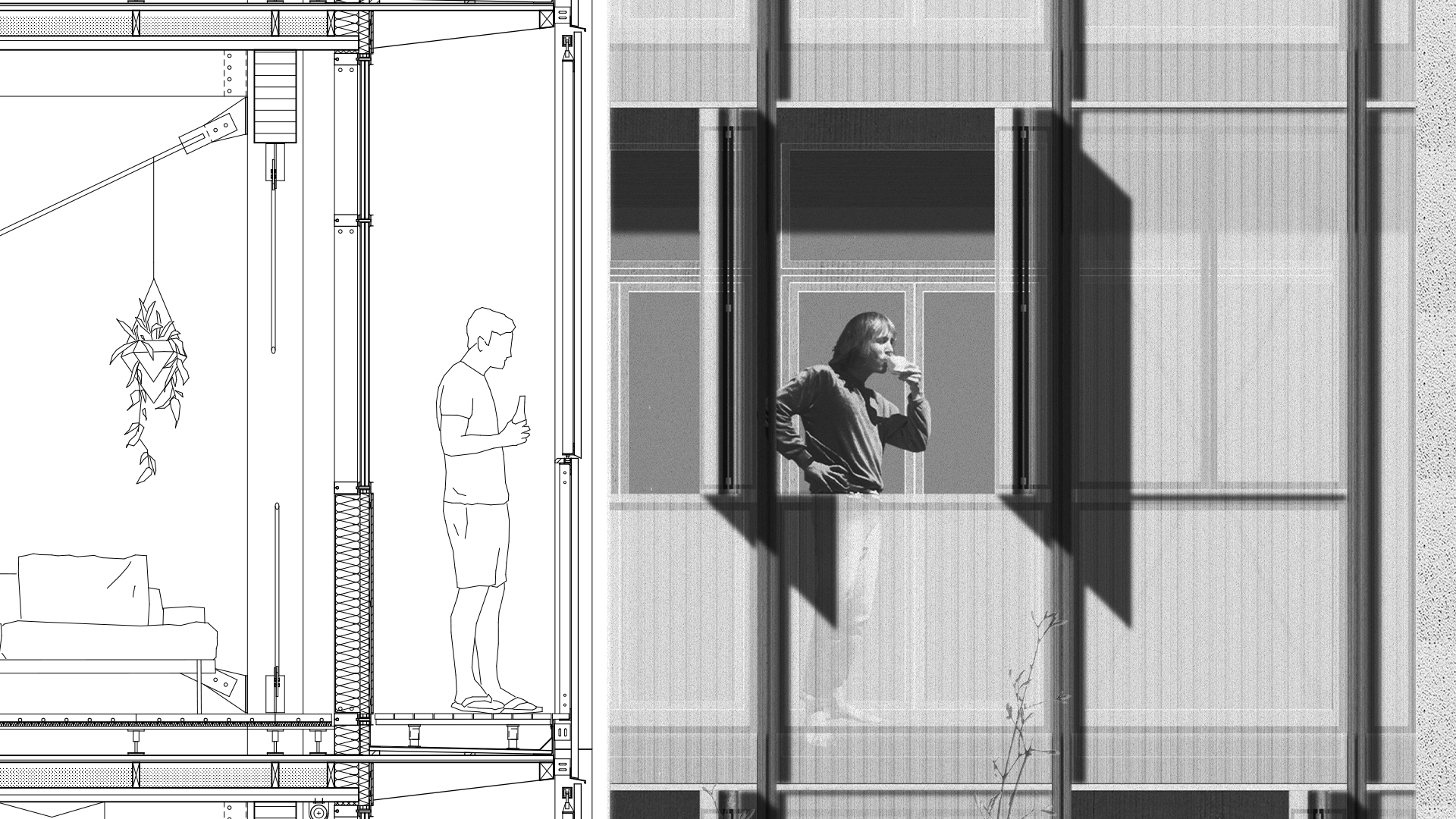06/2022
Circular economy compatible building design
What principles can future constructions follow so that the economic aspects of the circular economy can be integrated into the building sector?
Klaus Baumgartner
Diploma in Architecture
E259-2 Tragwerksplanung und Ingenieurholzbau
Supervisor: Alireza Fadai
In the face of a growing world population and the resulting global scarcity of resources, the circular economy is often seen as the only viable solution for a profitable and environmentally sustainable development of humankind. The basic concept of the circular economy is the disconnect between economic growth and resource consumption and it is thus an elementary building block of sustainability. This work is dedicated to this promising concept and attempts to form another building block in the transformation process from linear to circular building.
After an intensive examination of the circular economy, the barriers and drivers for implementation and already realised practical examples, the focus of the work is directed towards an organisation of the constructive elements that allow the application of circular business models.
Three levels of observation identify the principles of circular structuring and test their feasibility in an example project. With increasing resolution the levels systematically consider the individual components of a building. The first level looks at the infrastructural and spatial organisation of the overall system of a building. Here, the foundations for the longest possible service life are defined. The second level considers the subdivision into subsystems according to their functional characteristics and spatial integration within the overall system. Here, the organisational requirements for selective building deconstruction and the application of new business models are created. The third level looks at the structural and material properties of the subsystems. Here, the prerequisites for the technical deconstruction capability of the structural elements are created.
This systematic approach allows components and materials to be matched to each other so that material and energy flows can be minimised and life cycles maximised through new business models.
In the face of a growing world population and the resulting global scarcity of resources, the circular economy is often seen as the only viable solution for a profitable and environmentally sustainable development of humankind. The basic concept of the circular economy is the disconnect between economic growth and resource consumption and it is thus an elementary building block of sustainability. This work is dedicated to this promising concept and attempts to form another building block in the transformation process from linear to circular building.
After an intensive examination of the circular economy, the barriers and drivers for implementation and already realised practical examples, the focus of the work is directed towards an organisation of the constructive elements that allow the application of circular business models.
Three levels of observation identify the principles of circular structuring and test their feasibility in an example project. With increasing resolution the levels systematically consider the individual components of a building. The first level looks at the infrastructural and spatial organisation of the overall system of a building. Here, the foundations for the longest possible service life are defined. The second level considers the subdivision into subsystems according to their functional characteristics and spatial integration within the overall system. Here, the organisational requirements for selective building deconstruction and the application of new business models are created. The third level looks at the structural and material properties of the subsystems. Here, the prerequisites for the technical deconstruction capability of the structural elements are created.
This systematic approach allows components and materials to be matched to each other so that material and energy flows can be minimised and life cycles maximised through new business models.
Diploma in Architecture
E259-2 Tragwerksplanung und Ingenieurholzbau
Supervisor: Alireza Fadai
